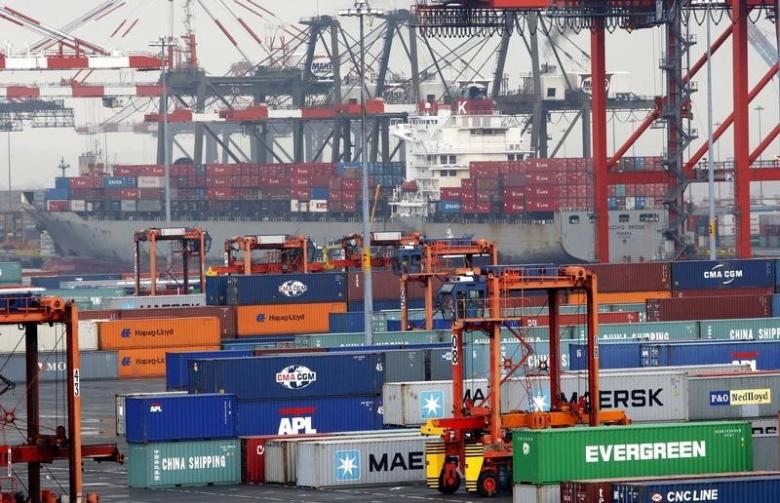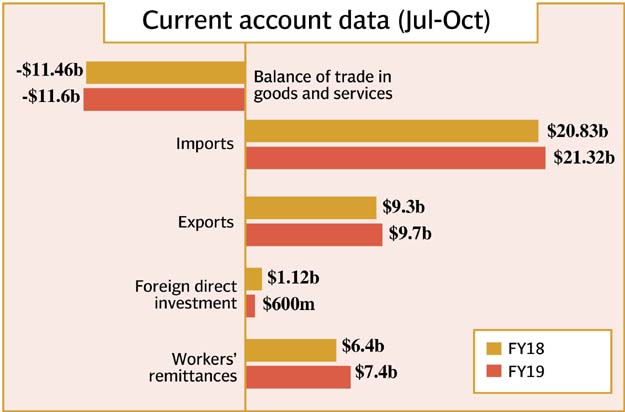
The deficit grew 34% to $1.21 billion in October compared with $909 million in the previous month, the State Bank of Pakistan (SBP) reported on Thursday.
“Higher imports and likely dividend payments to foreign investors caused the widening of the deficit,” Arif Habib Limited Deputy Head of Research Tahir Abbas said while talking to The Express Tribune.
Cumulatively, in the first four months (July-October) of the current fiscal year 2018-19, the deficit, however, shrank 4.6% to $4.84 billion compared with $5.07 billion in the same period of last year mainly due to a notable growth in remittances from overseas workers and reduction in the trade deficit on services, he said.
The reduction in the deficit also came after the government revised the deficit upwards by $1 billion to a record high of $18.99 billion for the previous fiscal year.
Finance Minister Asad Umar commented the other day that the current account deficit for FY18 was unsustainable.
The central bank has let the rupee depreciate by a massive 27% against the dollar and has increased the benchmark interest rate by 275 basis points to 8.5% in the past 11 months in a bid to narrow down the deficit.

The measures will, however, lead to a slowdown in economic growth to 4.7-4.8% in FY19 compared to a 13-year high growth of 5.8% achieved in the previous fiscal year, according to independent economists.
The 13-year high GDP growth in FY18 was achieved at “the cost of widening macroeconomic imbalances as manifested in the five-year high fiscal deficit and a record high current account deficit,” the central bank said in a recent report on the country’s economy.
The rupee depreciation was aimed at achieving higher exports and worker remittances. Though the devaluation has made imports expensive, it has largely failed to curb goods inflow.
Imports grew significantly to $4.71 billion in October compared with $3.79 billion in the previous month, according to the central bank.
Moreover, dividend and interest payments to foreign investors surged 41% to $521 million under the head of ‘balance of prime income’ compared with $370 million in the previous month.
On the other hand, exports improved 15% to $2.06 billion compared to $1.80 billion. Remittances registered a strong increase of 38% to $2 billion in October compared to $1.45 billion in the previous month.
Cumulatively, in first four months of the current fiscal year, the remittances grew 15% to $7.42 billion compared with $6.44 billion in the corresponding period of last year.
The notable growth in remittances lent much-needed support to narrowing down the deficit in the current fiscal year to date.
Moreover, “a 34% reduction in the trade deficit on services to $1.09 billion from $1.65 billion also helped narrow down the deficit in the four months,” Abbas added.
The trade deficit on goods, however, grew 7.2% to $10.50 billion in the four months compared to $9.79 billion in the same period of last year.
Published in The Express Tribune, November 16th, 2018.
Like Business on Facebook, follow @TribuneBiz on Twitter to stay informed and join in the conversation.










































COMMENTS
Comments are moderated and generally will be posted if they are on-topic and not abusive.
For more information, please see our Comments FAQ